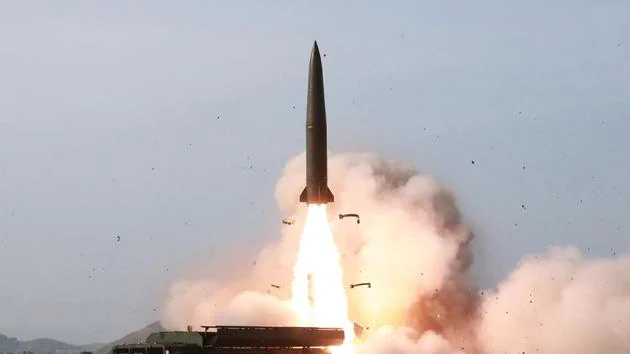
SEOUL, Oct 19, 2021 (BSS/AFP) - North Korea fired a ballistic missile into
the sea on Tuesday, South Korea's military said, its latest in a series of
tests with analysts saying it could have been a submarine-launched weapon.
The "unidentified ballistic missile" was fired from Sinpo into the sea east
of the peninsula, Seoul's Joint Chiefs of Staff said in a statement.
"South Korean and US intelligence are closely analysing for additional
detail," it added.
Sinpo, where the missile was fired from, is a major naval shipyard and
satellite photographs have previously shown submarines at the facility.
The North is known to be developing a submarine-launched ballistic missile
(SLBM) and previously carried out an underwater launch, although analysts
said that one was likely to have been from a submerged platform rather than a
submarine.
"There is a high possibility the North launched an SLBM," said Shin Beom-
chul, a researcher at the Korea Research Institute for National Strategy.
It comes after the nuclear-armed North -- which invaded its neighbour in
1950 -- in recent weeks tested a long-range cruise missile, a train-launched
weapon and what it said was a hypersonic warhead, sparking global concern.
It also mounted a rare weapons exhibition, showcasing the gigantic
international ballistic missile (ICBM) revealed at a night-time military
parade last year.
"The fundamental reason for the North's provocation is because the US is
not changing its position on talks," Shin told AFP, adding: "Pyongyang is
trying to demonstrate that it can carry out a bigger provocation."
Opening the weapons exhibition, leader Kim Jong Un -- who has overseen
rapid progress in the North's military technology, at the cost of
international sanctions -- blamed the United States for tensions, dismissing
Washington's assertions that it does not have hostile intentions.
Something of a regional arms race is developing on the peninsula, with the
South last month testing its first SLBM, putting it among the elite group of
nations that have demonstrated proven technology, and unveiling a supersonic
cruise missile.
Following Tuesday's launch, the South's presidential office said it was
convening a meeting of the National Security Council.
Japanese Prime Minister Fumio Kishida said two ballistic missiles had been
fired, called the launch "very regrettable".
- 'No hostile intent' -
Pyongyang's latest move came with Avril Haines, the US director of national
intelligence, visiting Seoul for a three-way meeting with her South Korean
and Japanese counterparts on North Korea Tuesday, according to reports.
It also followed a US envoy renewing his appeal for talks.
"We harbour no hostile intent toward the DPRK and we are hopeful to meeting
with them without conditions," said Sung Kim, the US special representative
on North Korea, following talks with his South Korean counterpart in
Washington.
But he added that the allies had "a responsibility to implement UN Security
Council resolutions", referring to sanctions that North Korea seeks to see
lifted.
South Korean President Moon Jae-in is pressing for a formal declaration
that the Korean War is over -- hostilities ceased in 1953 with an armistice
rather than a peace treaty -- before his term ends next year.
Kim met three times with former president Donald Trump, who boasted of
stopping a war but failed to reach a comprehensive agreement on ending North
Korea's nuclear programme.
The talks process has been largely at a standstill since a second meeting
in Hanoi the following year collapsed over sanctions relief and what
Pyongyang would be willing to give up in return.
The Biden administration has said it is willing to meet North Korean
officials at any time or place, without preconditions, in its efforts to seek
denuclearisation.
Pyongyang is under multiple international sanctions over its banned nuclear
weapons and ballistic missile programmes, which it says it needs to protect
itself against a US invasion.
In 2017, it tested missiles that can reach the whole of the continental
United States and carried out its most powerful nuclear explosion to date.